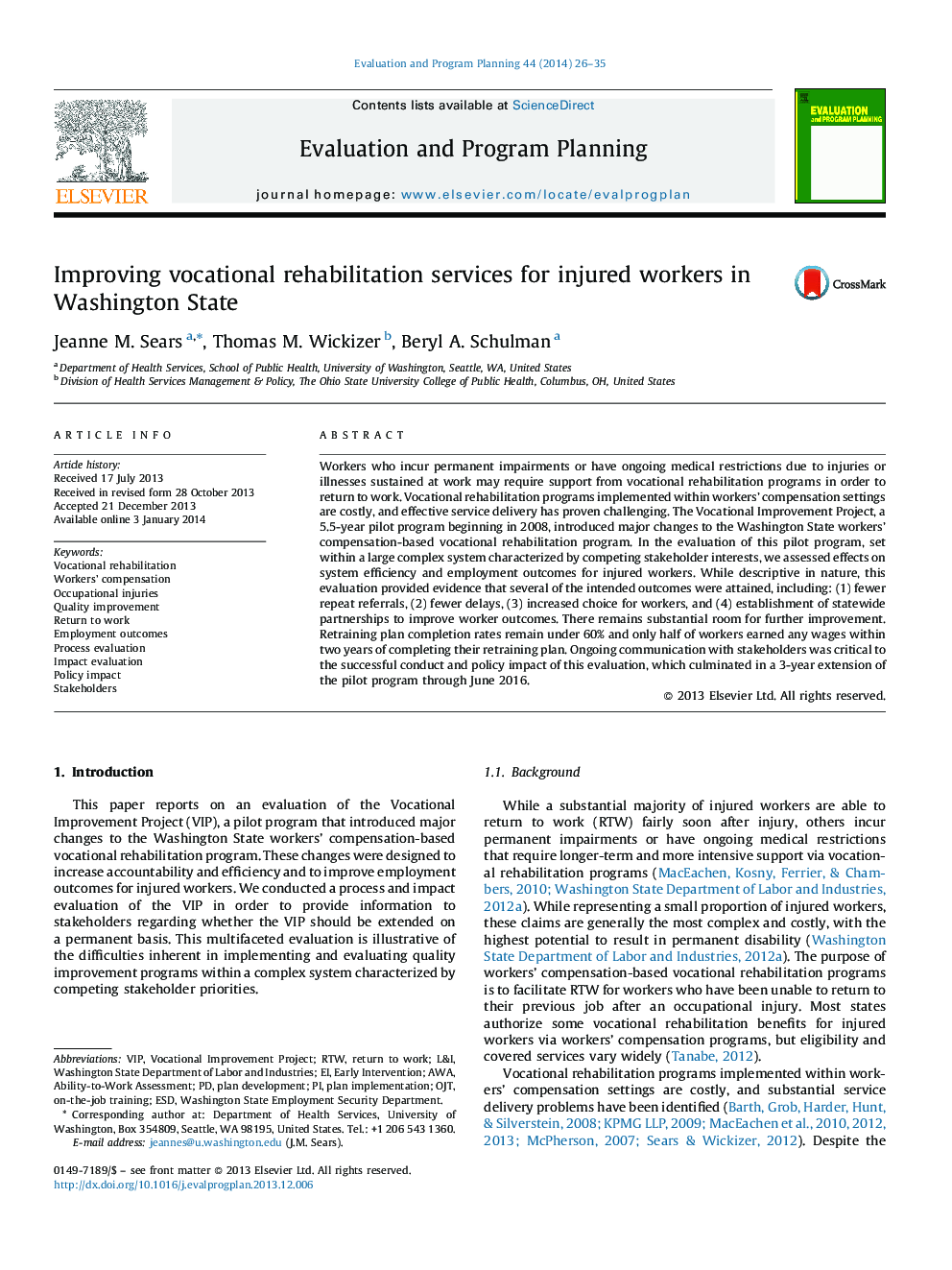| Article ID | Journal | Published Year | Pages | File Type |
|---|---|---|---|---|
| 319416 | Evaluation and Program Planning | 2014 | 10 Pages |
•We evaluated a pilot vocational rehabilitation program for injured workers.•We found evidence for several improvements in program quality and efficiency.•There remains substantial room for improvement in employment outcomes.•Maintaining ongoing communication with stakeholders was critical to the evaluation.
Workers who incur permanent impairments or have ongoing medical restrictions due to injuries or illnesses sustained at work may require support from vocational rehabilitation programs in order to return to work. Vocational rehabilitation programs implemented within workers’ compensation settings are costly, and effective service delivery has proven challenging. The Vocational Improvement Project, a 5.5-year pilot program beginning in 2008, introduced major changes to the Washington State workers’ compensation-based vocational rehabilitation program. In the evaluation of this pilot program, set within a large complex system characterized by competing stakeholder interests, we assessed effects on system efficiency and employment outcomes for injured workers. While descriptive in nature, this evaluation provided evidence that several of the intended outcomes were attained, including: (1) fewer repeat referrals, (2) fewer delays, (3) increased choice for workers, and (4) establishment of statewide partnerships to improve worker outcomes. There remains substantial room for further improvement. Retraining plan completion rates remain under 60% and only half of workers earned any wages within two years of completing their retraining plan. Ongoing communication with stakeholders was critical to the successful conduct and policy impact of this evaluation, which culminated in a 3-year extension of the pilot program through June 2016.
